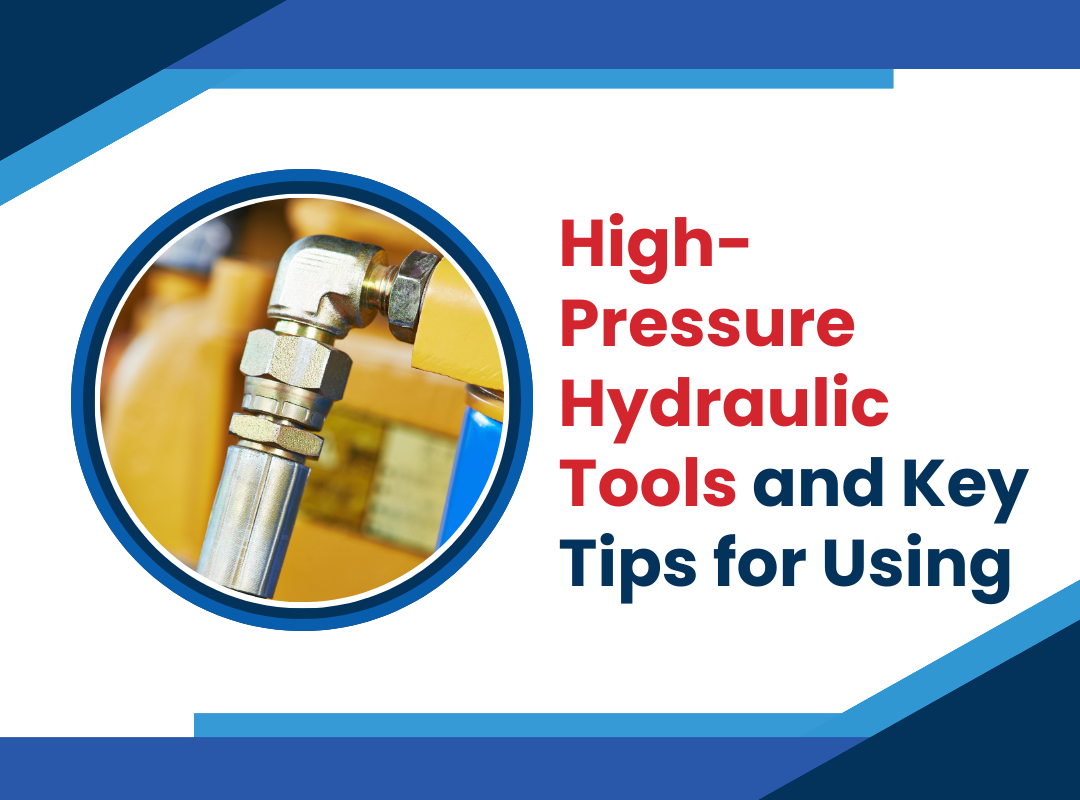You are aware that a hydraulic system works on the mechanical function that operates via the force of liquid pressure. But what do high-pressure hydraulic tools refer to? Well, those are hydraulic systems that operate at a pressure greater than 450 bar. And these high-pressure systems are used to handle heavy loads.
Now you get this question, how to maintain High-Pressure Hydraulic Tools. To get an answer to this, continue reading to find out some crucial tips to handle high-pressure hydraulic tools.
There are multiple benefits of using high-pressure hydraulic tools. As mentioned earlier, they are used for lifting heavy loads. Additionally, the hydraulic system can act more compact as per Pascal’s law. This law states that force is directly proportional to pressure and area. So by using a small compact hydraulic system, it is possible to double the hydraulic pressure.
Key Tips for Using High-Pressure Hydraulic Tools
Regular Maintenance
Hydraulic System failure can result in severe safety hazards. The possibility of failure is high if you don’t maintain the system regularly. The most common reason for the short lifespan of hydraulic tools is contamination which accounts for almost 90% of failures. So you must take some extra steps to avoid contamination whenever and wherever possible.
Some maintenance tips are
Ports and Fittings
Port plugs must be plugged into the components until it is ready to use and ensure the port is clean and lubricated.
Fluids
- Hydraulic fluids must be filtered to ISO 18/12 initially.
- Ensure that water and hydraulic fluids don’t mix.
- Also, hydraulic assembly areas should be free of airborne contaminants.
- Any surface that comes in contact with hydraulic fluid must be clean and dry.
Assembly and Storage
Until you use it, the reservoirs must be treated with rust protection and sealed. And when it is time to use, flush out the rust protection.
The hydraulic assembly must be free of airborne contaminants.
If the components are stored in a cold environment, remove the condensation that may occur when the components start to warm up.
Regular Monitoring
Hydraulic systems working under extreme pressure can cause extreme stress on the machine components. So it is mandatory to monitor the entire system at regular intervals.
Follow the Safety Guidelines
The safety guidelines here refer to wearing gloves, boots, safety shoes, safety glasses, and hard hats while working with the hydraulic system machines. Though most engineers take precautions to avoid accidents, some sudden issues might pop up due to not assembling the components correctly or not operating the equipment properly. So it is necessary to be prepared to handle any such situation.
Factors to Consider while Lifting Loads
If you lift anything over the capacity of the Hydraulic Machinery, then it might result in trouble. So it is essential to remember the following points.
1. Try to estimate the load your machinery will be lifting and then apply a suitable safety factor.
2. Some pumps may have relief valves that help to control or limit the surges of pressure within the pipelines, while others don’t. So have this in mind while operating them under high pressure.
3. Use gauges to check if the operating loads are safe. Your gauge will also help determine if there is any pressure in the system before you make any changes or breaks in the hydraulic connection.
4. Also, check the hydraulic system working environment before you advance or retract a cylinder.
Conclusion
By adhering to the above-given guidelines, you can easily handle high-pressure hydraulic tools. The one important thing we stress out is to ensure that the hydraulic system can handle any sort of pressure. For instance,
If your hydraulic system has 700bar working pressure, then you must ensure that the weakest parts are compatible with the high pressure. If the pressure exceeds the predefined limit, the system might malfunction. Apart from this, maintenance, right assembling, etc., must be done or checked.


